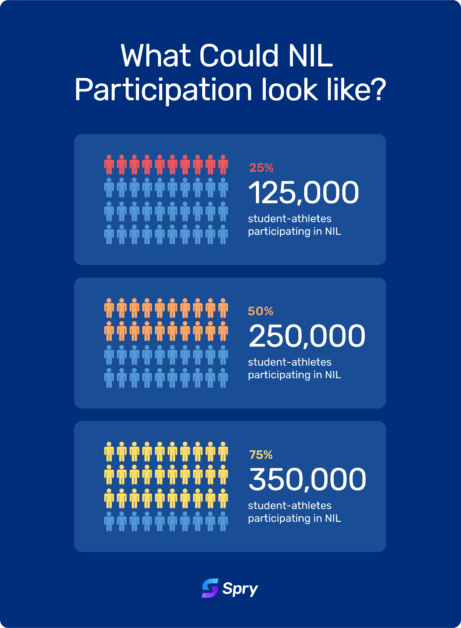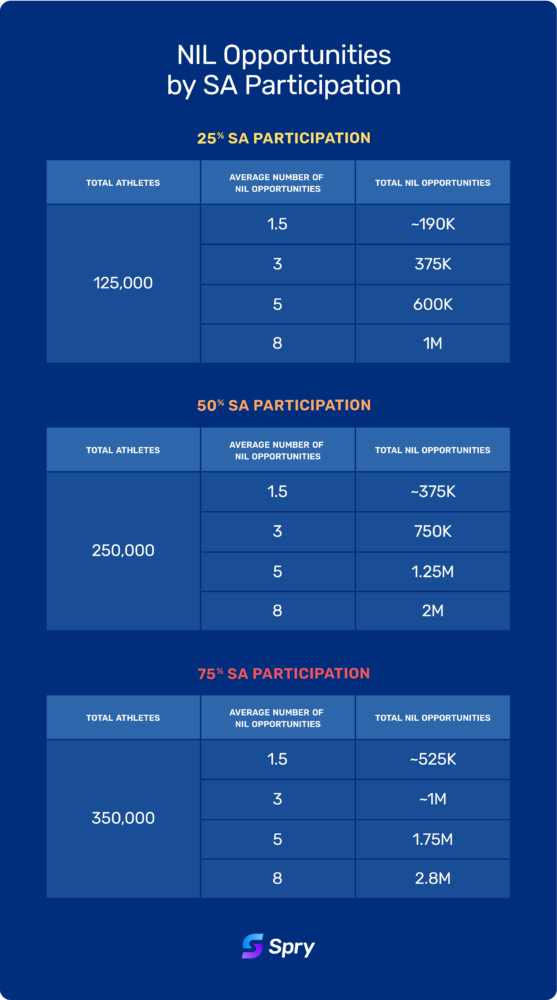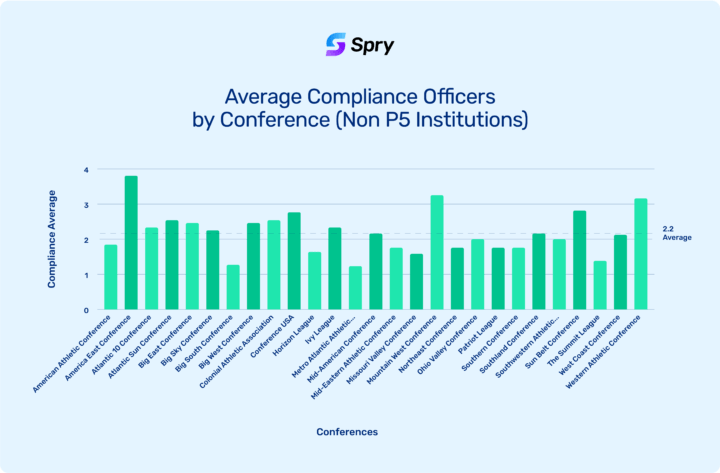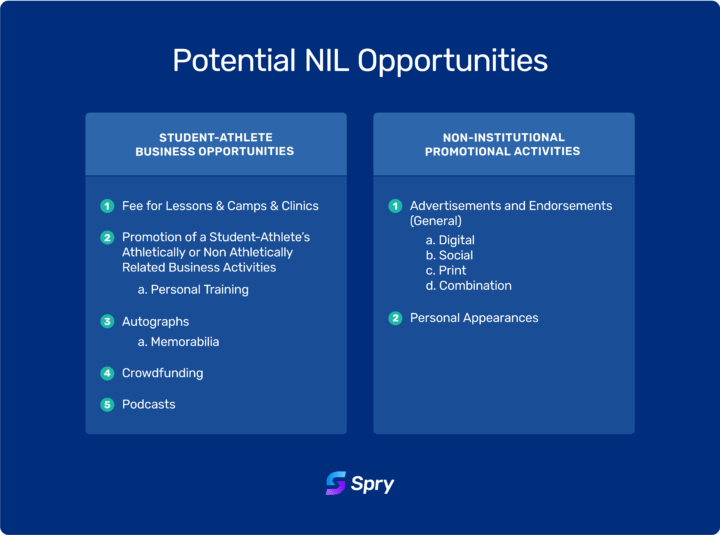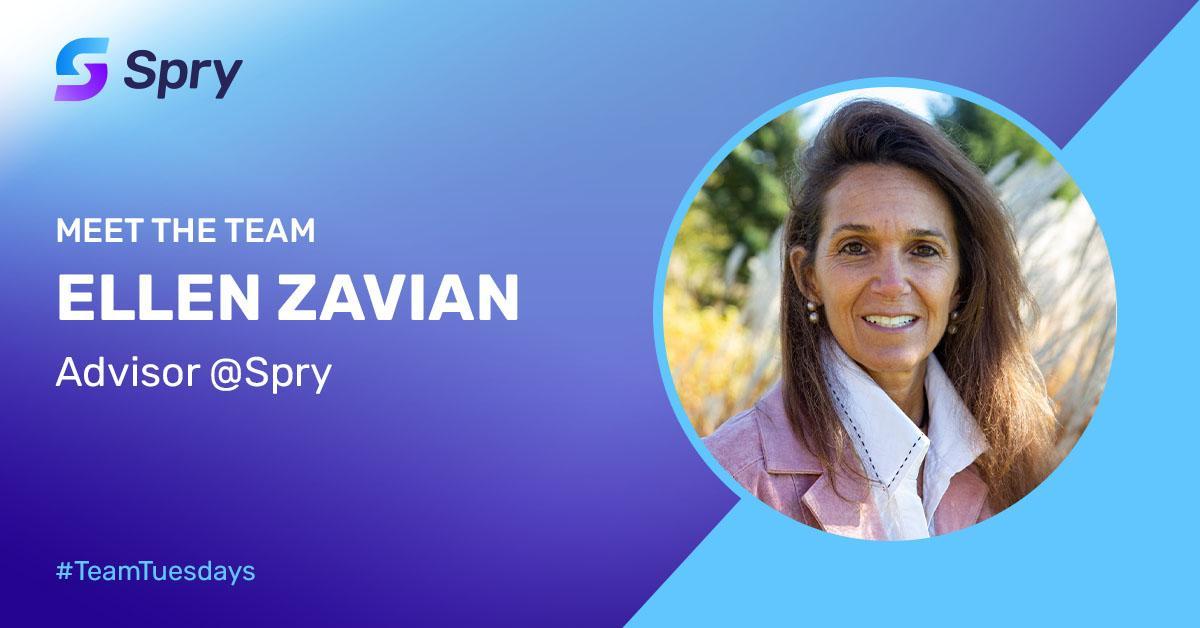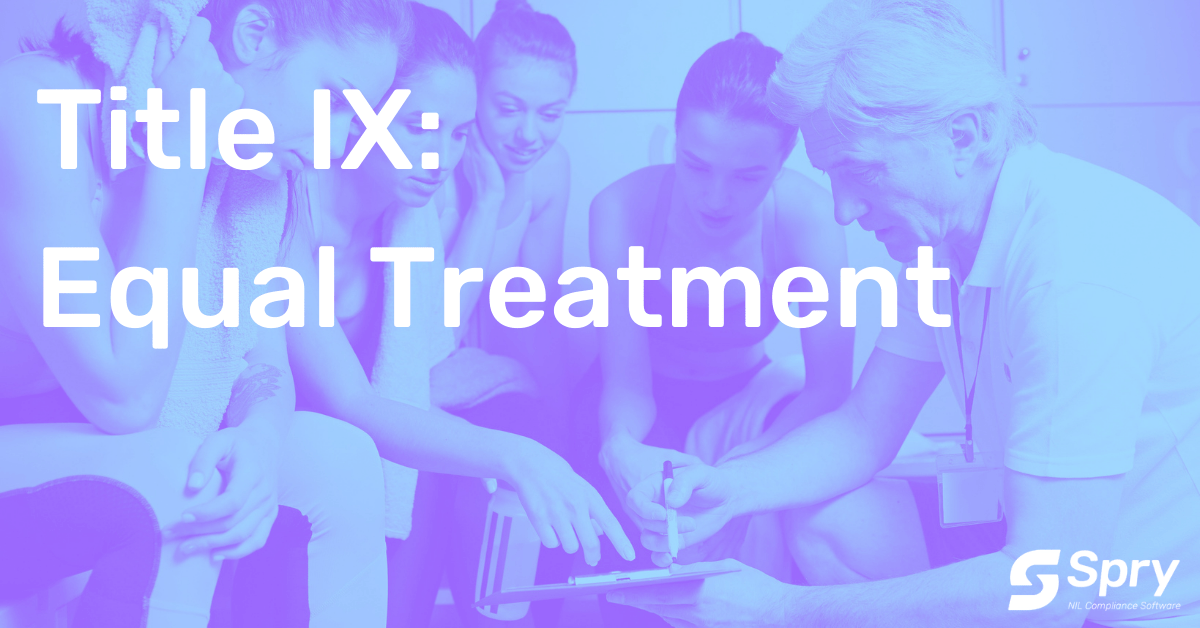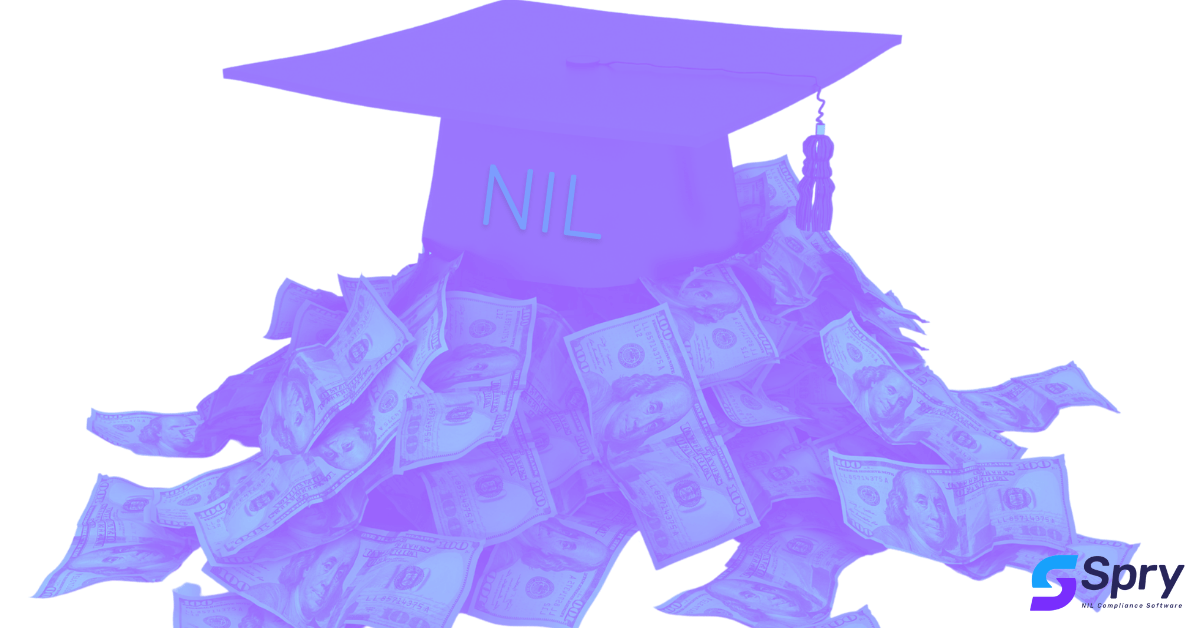Insights
Exploring the Various Layers of the NIL Ecosystem | Part 1 (The Student-Athlete Perspective)

Information contained herein has been obtained from sources considered to be reliable, but we do not guarantee their accuracy or completeness.
The Name, Image, and Likeness (NIL) Era is less than one week away.
On July 1st, Alabama (Arizona – July 23rd), Florida, Georgia, Kentucky, Mississippi, New Mexico, and Texas will allow student-athletes to earn compensation from their NIL for the first time in the history of collegiate athletics.
There are four states (Louisiana, Connecticut, Illinois, and Missouri) that have NIL bills on their Governor’s desk. These 12 states have over 275 colleges and universities that participate in NCAA sanctioned sports. This means over 82K student-athletes* will have the opportunity to monetize. This new NIL ecosystem will undoubtedly create a compounded (or extensive) layer of complexity because of the many stakeholders – NCAA member institutions, student-athletes, conferences, agents, brands, the NCAA, and the federal government, each of which has competing objectives.
No one knows how this new ecosystem will function or operate. However, I am excited, curious, and reserved as I write these words. Let us explore the various layers of this NIL new ecosystem and see where they might lead.
The Student-Athlete Layer
- How many student-athletes will participate in NIL?
- How much will student-athletes make from NIL?
- Will international student-athletes be allowed to participate?
- What types of opportunities will be most common?
- Will student-athletes understand the importance of paying taxes?
- Will NIL change the pillars of collegiate athletics that we know and love?
- Will NIL negatively impact some student-athletes? Will some student-athletes lose their eligibility? Will some lose their financial aid packages?
As a former student-athlete, I can unequivocally say that I would not be where I am today professionally without the life lessons I learned and guidance provided to me during my time as a Wake Forest student-athlete.
These are a few of the myriad of questions that the collegiate athletics industry is asking as July 1st approaches. Some of these questions will be resolved with time while others will hopefully be addressed as institutions and conferences finalize their NIL policies. With approximately 500K student-athletes across 1,100 institutions, NIL has the potential to overwhelm athletics departments with paperwork and administrative tasks to ensure student-athletes and their institutions remain compliant with the state (and hopefully federal) legislation.
Overall Student-Athlete Participation
Opportunities by Student-Athlete
According to the NCAA, there are over eight million student-athletes that participate in high school sports yet only 450K of these student-athletes become collegiate student-athletes, equating to roughly a six percent conversion rate.
The high school athletes who are fortunate enough to continue their athletic careers in college are hometown heroes. With this in mind, it’s safe to assume many of the student-athletes that choose to participate in NIL will have numerous opportunities in their local communities where they were all conference, all city, or all regional athletes.
At this time, it’s unknown to what extent athletic departments can be and will be involved. The various state laws restrict institutional involvement. Institutions cannot help a student-athlete secure a NIL opportunity. However, many bills require that student-athletes disclose their NIL opportunities to the university before the opportunity is executed.
If an athletic department is required to review these disclosures, there will be an enormous amount of stress put on the compliance team to quickly set up processes and manage each disclosure efficiently. Athletic departments could see anywhere from 300 to 2000 opportunities from its student-athletes in an academic year.
The average non-Power 5 D1 athletic department has 2.2 ‘compliance staff’ whereas the P5 schools have approximately six dedicated compliance staff (see graphs).
Opportunity Type Distribution
The NCAA Division 1 Legislative Solutions Group initially separated student-athlete NIL opportunities into two distinct buckets.
Let’s take a deep dive into Camps, Private Training Sessions, and Autographs/Memorabilia.
Memorabilia and Autographs
A 2018 Forbes article estimated the US Sports Memorabilia market to be worth over $5B. “This figure includes the total gross merchandise volume [GMV] from eBay, independent auction houses, online retail venues, and other sources.” $5B is a large number and this estimate was before the launch of NFTs into the memorabilia ecosystem.
There is no formal market set for collegiate athletes. But our sense is that there will be a group of elite athletes that will take advantage selling memorabilia and autographs while they are still representing their institution.
The proposed NCAA NIL legislation states student-athletes may not receive compensation for signing an autograph while participating in required athletic related activities or otherwise representing the institution (after games, practices, etc.) However, the rules permit an individual to be paid for their autographs as a business activity or in conjunction with a commercial endorsement or appearance.
How many autographs would the Gatorade Player of the Year from your home state have signed if there were no restrictions on NIL compensation?
Only time will tell how many autographs student-athletes sell in the second half of 2021, but I anticipate this will be a popular earnings opportunity for those student-athletes who choose to participate in NIL.
Camps, Private Training Sessions
The American Camps Association reports that the camps industry is a $3B annual business. With COVID19 canceling all 2020 summer camps, 2021 will be a busy time for camps, camp counselors, and campers. With this in mind, camps and private lessons will be a great (and popular) way for student-athletes to earn compensation from their name, image, and likeness.
How much will student-athletes make?
Some student-athletes will make significant income from their NIL opportunities. However, I believe the majority of NIL payments will be under $2K and the distribution of these payments will be a right tail graph.
Student-athletes will have the opportunity to become entrepreneurs and create their own businesses. However, the success of these endeavors will depend on how much time and energy a student-athlete will dedicate to their business.
NIL= Lemonade stand.
In order to have a successful lemonade business, you have to market and advertise yourself and your lemonade stands. You have to distinguish yourself from the other lemonade stands in the neighborhood, and most importantly you have to make great lemonade.
We have created an NIL Ramp Up Guide for your team to reference as you prepare for NIL. If you would like to test our robust platform, please sign up for a demo here and if you have any questions or comments, please email us at [email protected].
Next: we will explore the complex ‘Institutional Layer.
*Estimating about 300 SA’s at each school = 78,900 SA’s in these 11 states
The views expressed herein are those of the author and do not necessarily reflect the views of Spry Payment Systems or its affiliates. All opinions are subject to change without notice.

